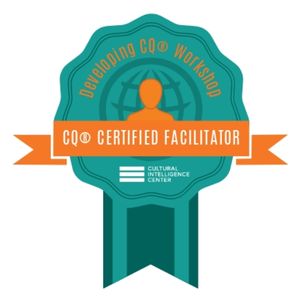Listen here:
Watch here:
Navigating redundancy with resilience, the evolving role of AI in the workplace, and what impactful learning and development looks like in today’s hybrid, fast-moving world.
In this podcast episode I am joined by Learning & Development specialist, Valerie Merrill, who shares her personal journey of being made redundant multiple times, how it led her to becoming her own boss, and why she believes redundancy can be a pivotal moment for reflection, reinvention, and growth.
We explore the realities of transition, if you’re considering starting a business, adapting to AI-led change, and why inclusive, human-focused Learning & Development design is more essential than ever.
With over 35 years in training across industries, Valerie has a wealth of experience and knowledge identifying the right learning interventions to achieve team and organisational goals in learning and development, while focusing on return on investment.
What you will learn in this episode:
- How to reframe redundancy as an opportunity rather than a setback.
- Practical strategies for staying resilient and taking action in uncertain times.
- How to assess whether running your own business is the right move.
- Where AI is making the biggest impact in learning and workplace communication.
- Why inclusive, adaptive learning design matters more than ever.
Reflection questions for you to consider:
- How do you respond to unexpected change: do you resist it or explore it?
- Could moments of uncertainty be your opportunity to grow or pivot?
Find out more:
Episode Overview:
Redundancy, Reinvention and the AI Revolution with Valerie Merrill
Valerie Merrill, Learning & Development specialist, joined me on the podcast recently and we unpacked her personal journey through redundancy, the evolution of AI in the workplace, and what it really takes to become a future-ready global leader. If you’re going through transition, or navigating a career pivot, these insights offer both perspective and practical tools.
1. Reframing Redundancy: Opportunity in Disguise
Valerie shared that being made redundant four times in five years became the catalyst for her becoming her own boss. Instead of viewing redundancy as failure, she reframed it as a launchpad for her growth. She recommends a pragmatic, human-led approach to manage yourself through changes like these:
- Get financially grounded, build a three-to-six-month cushion.
- Embrace curiosity, research sectors and trends that interest you.
- Flex your network and be open to bridge roles or reskill.
- Keep your confidence front and centre, remember that redundancy isn’t a reflection on you personally or your capabilities.
Reflection: Thinking about the future, what is your 1 action you can take to be prepared?
2. Navigating the Emotional Rollercoaster
Redundancy isn’t only a practical challenge, it’s emotional too. Valerie recalls feeling directionless, frustrated, even bereaved. Her approach to regaining balance:
- Take fast, intentional action, even a small step can restore purpose.
- Ground yourself with routines: walking, exercise, networking- whatever nurtures resilience.
- Channel frustration through practical activity, not over-thinking.
- Keep your spirit up. People want to work with someone composed, curious, and solution-focused.
Reflection: What grounding routines help you stay centered?
3. From Employment to Entrepreneurship
Valerie decided to start a business after redundancy, and it wasn’t easy. She warns it requires a diverse skillset:
- Marketing, finance, sales- you will need to flex and learn new skills.
- Treat yourself as a full package of expertise, not work‑in‑progress.
- Do your research, understand trends, test your idea, pilot your offerings.
- Fail fast, recover quickly. This is not the end; it might be the pivot.
Ultimately, the difference is consistency and cultivating your confidence.
Reflection: If you were to decide to become your own boss, which business skill would you need to sharpen first?
4. AI in Leadership and Learning: Embrace the Change
Valerie is emphatic about the role of AI in modern leadership and learning. It’s not only about chatbots, AI is fundamentally reshaping leadership communication, growth, and skills development.
- Tools like Copilot and Perplexity accelerate responses, but must be quality‑checked by you, as a human.
- Learning experiences are now adaptive and embedded in the flow of work.
- AI‑powered platforms can tailor content to individual needs, style and role.
- The real edge comes from blending inclusive design with human‑centred delivery.
Valerie flagged that many learning programmes fail not because technology is weak but because they ignore culture, simplicity and accessibility.
Reflection: What new way of using AI tools could you start using this week to strengthen your approach?
5. Designing Inclusive and Effective Learning
Valerie emphasises that the future of development isn’t bigger, it’s smarter, with inclusive, human‑centric design:
- Know your audience, content must be fit for purpose.
- Pilot programmes: learn with real users before full roll‑out.
- Create champions inside the business to drive adoption.
- Iteration matters, tiny moments of just‑in‑time learning have more impact than huge content dumps.
- Always evaluate: track engagement and outcomes. If it’s not doing what you intended, change it fast.
A brave commitment to culture and value makes learning an experience, not an obligation.#
Reflection: How can you improve your existing training?
Redundancy, AI disruption and career pivots aren’t only challenges, they are invitations to possibilities.




